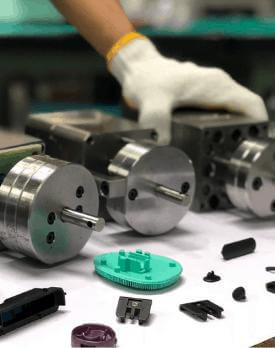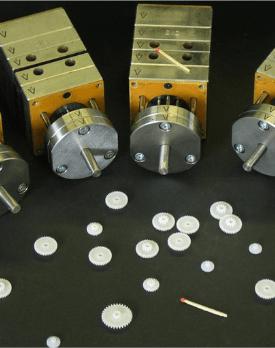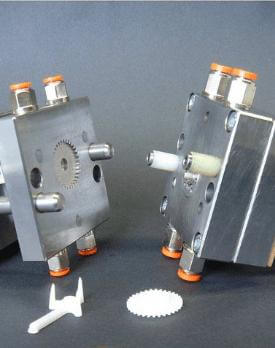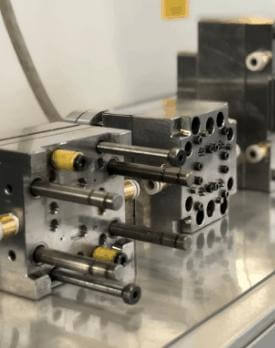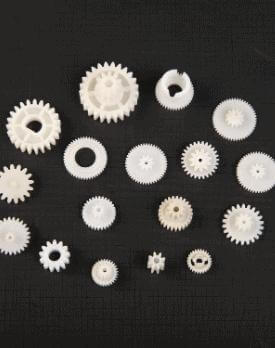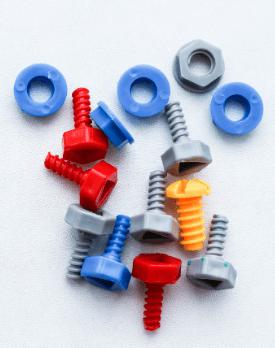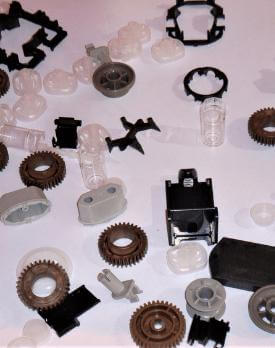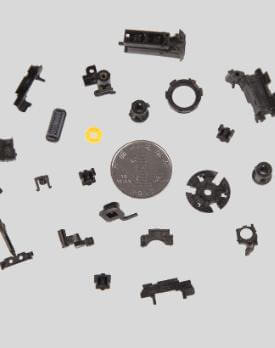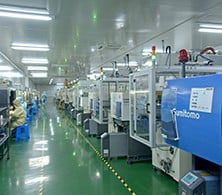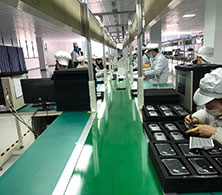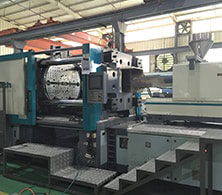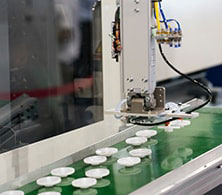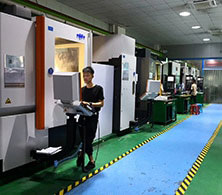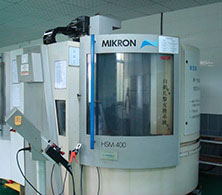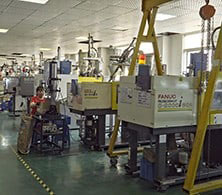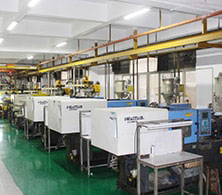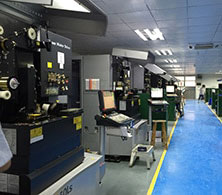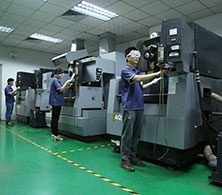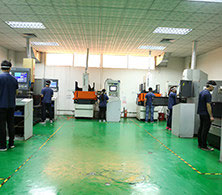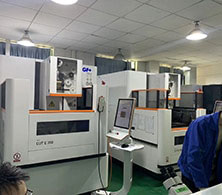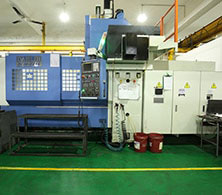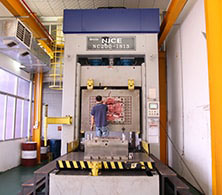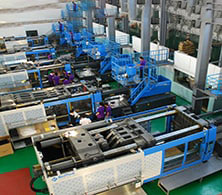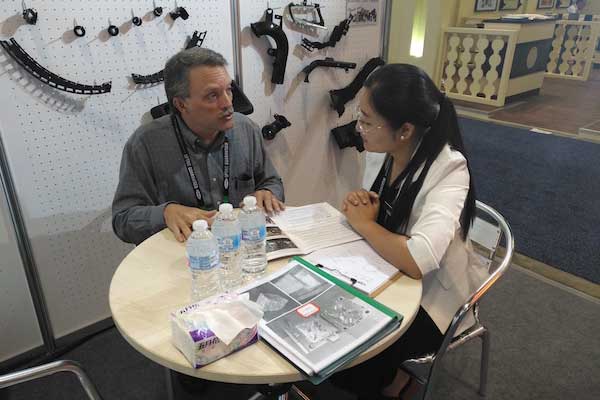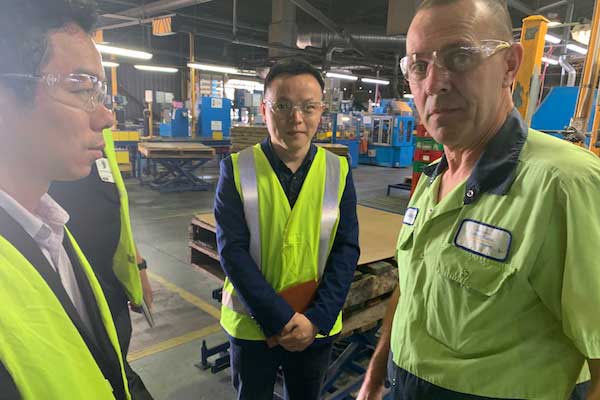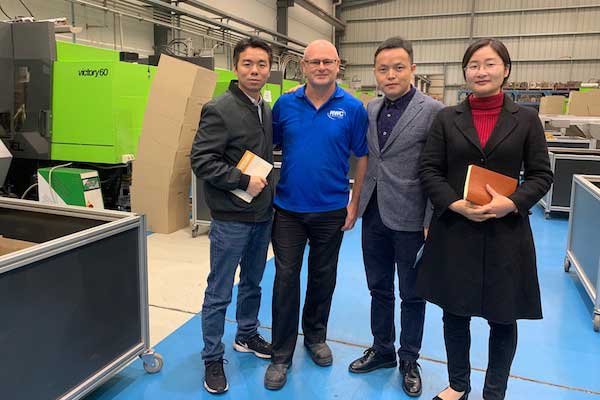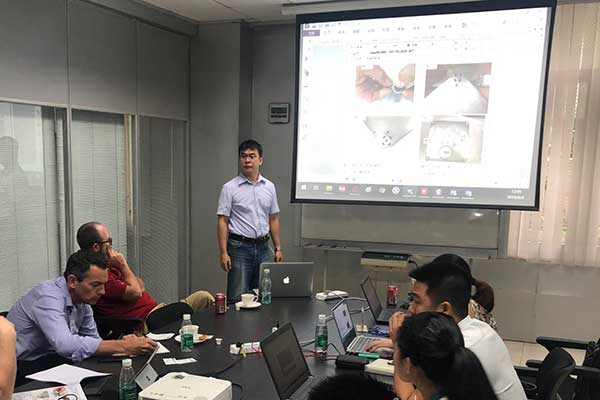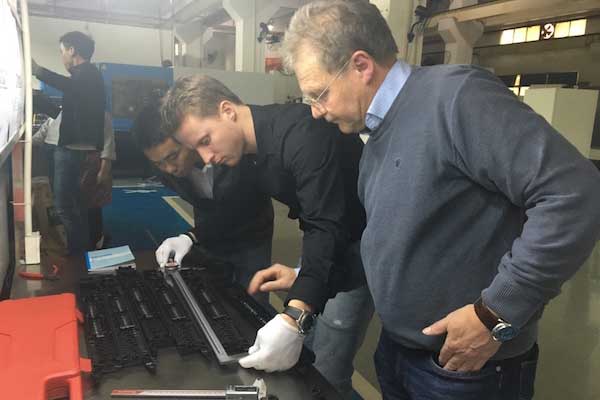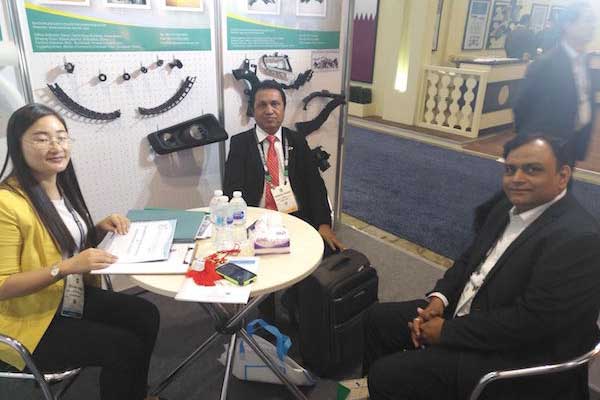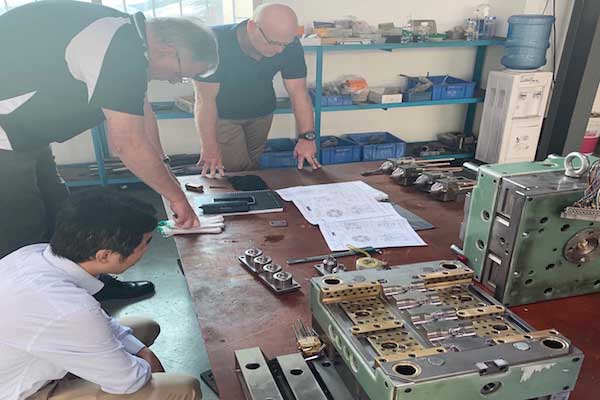Micro Injection Molding Service
Micro injection molding is a precision molding process. The design and control of every step in the mold manufacturing process is the key to the success of the micro-injection project. Moreover, they are capable of handling extremely tight tolerances and complex special products due to their strong capabilities in mold design, manufacturing, and inspection. Our ultimate goal is to provide customers with quality products without any delay. In addition, Holly has strict quality assurance, which is essential for any micro-forming operation. Use high-precision gauge needle to measure, you can get 100% satisfactory products.
Micro Injection Molded Parts
Holly can produce extremely small products with strict tolerances, which are widely used in medical, automotive, aerospace, electronics, communications, defense and general industries.
China Micro Injection Molding Maker FAQ


Micro Injection Molding- Ultimate FAQ Guide
Holly’s goal is to build an enterprise based on manufacturing high-quality micro-injection molding, and to create a high-quality talent that Holly is proud of. Our team has the same passion for manufacturing high-quality products, which in turn will bring you higher quality output.
At the same time, we are also able to meet all production deadlines for ourselves without any surprises or unexpected problems, so you can expect your products to arrive on time. As a professional micro-injection manufacturer, we have 24 years of experience. Kemar has paid 100% enthusiasm for you.
Here is a list of frequently asked questions about micro-injection molding. You can check any questions you want to know about micro-injection.
[lwptoc skipHeadingLevel=”h1″]
1. What products are micro-injection molding usually used for?
Micro-injection products are usually used for:
Micro-injection technology is developing rapidly in the fields of optical communications, computer data storage, medical technology, biotechnology, sensors and actuators, micro-optics, electronics, consumer products, manufacturing, and mechanical engineering.
Typical examples include watches, camera components, equipment, acceleration and distance sensors, hard disk and CD-ROM drive read-write heads, medical sensors, micro pumps, spools, high-precision wheels, pulleys and screws, optical switches and plugs, micro motors, Surgical instruments and communication products.
2. What is the classification of microinjection products?
The classification of micro-injection products is as follows:
- The weight of the microinjection product ranges from a few micrograms to a fraction of a gram and maybe in the micron (millimetre) range.
- Injection molded products of regular size but with microstructured areas or feature areas, such as discs with data point gaps, lenses with micro surface features, and thin plates for micro-gears manufactured by plastic sheet technology.
- High-precision products of any size but with a dimensional tolerance in the micron level, such as optical fibre technology connectors.
3. What are the equipment requirements for micro injection molding?
The requirements for micro injection molding equipment are as follows:
- Precise injection volume control, ideal injection speed.
- A small plasticizer should be used, the screw diameter is 12-18mm, the screw length is shorter, and the L/D ratio is about 15 to avoid material degradation due to long residence time.
- Various controls can be performed according to the screw position and cavity pressure, such as switching from filling to pressure holding.
- In addition to being adjustable, the mold temperature can also be increased to a certain level, sometimes slightly higher than the melting temperature of the polymer to prevent premature solidification of the ultra-thin part. If the wall thickness of the micro-injection product is less than 5mm, the ability to extract the mold is required, because in this case, the wall thickness and the vent size are the same order of magnitude.
- It is recommended to use switching nozzles to avoid melting when the processing temperature is high
- Accurate positioning and stable switching speed to avoid deformation of precision micro-injected parts.
- Using special operation techniques, take out the molded parts for inspection and packaging.
- Try to prepare a clean and closed place or layered turnover box on site to avoid contamination of micro injection molded parts.
4. What are the characteristics of micro injection mold design?
The characteristics of micro injection mold design are as follows:
Except that the size of micro-injection molds is significantly smaller than traditional molds, it also has the following characteristics:
Due to the small size, fewer cavities are generated, which improves the balance of the mold and makes the appearance of the product more accurate. Moreover, the small size allows for more stable temperature control and precision molding, as well as saving energy for heating or cooling the mold. Hot runner system is generally recommended: because the mold cost is low, the development cycle is short.
5. What processing methods can be used for micro injection molds?
The following processing methods can be used for micro injection molds:
Such as various machining methods and electric discharge machining (EDM). However, as the size of mold inserts and cavities decreases, traditional processing methods quickly reach their processing limits.
Micro-injection mold inserts and cavities are produced using some technologies in the field of microelectronics currently. A common method is LIGA, which is an acronym for 2-1 deep-ray lithography, electroplating, and injection molding in German. Other processes include micro-cutting, ultra-precision machining, laser machining and micro-EDM technology.
6. What equipment is needed for the correct production and collection of microinjection products?
Improved mold sensor, high-precision guide mold device, mold deepening system, integrated channel collector and product disassembly manipulator, automatic gate system, the mold cleaning system is activated in each cycle.
7. What plastic materials can be used for micro injection molding?
Micro injection molding materials include polyoxymethylene (Pom), polycarbonate (PC), polymethylmethacrylate (methyl methacrylate), nylon (nylon PA), liquid crystal polymer (liquid crystal polymer), polyetherimide Amine (Pei), silicone rubber, etc. Acrylic, acrylamide and silicon-based materials are also used for reaction injection.
Most common engineering plastics are suitable for micro-injection molding. By comparing PP, PA and POM materials, it is concluded that PP is the most suitable material for micro gear molding. By comparing the micro-injection medical needles of PS, pa6-nanomaterials, PC and other materials, it can be concluded that the product quality of injecting pa6-nanomaterials is poor, which may be related to the high hygroscopicity of the material.
8. What are the advantages of micro injection molding?
Micro injection molding is an important process for thermoplastic molding, it can reduce manufacturing costs and shorten the production cycle. The molding process is simple, and it is easy to ensure the quality of the parts. It is easy to realize automation and mass production. Micro injection molding technology has become one of the key technologies of micro manufacturing. It is developing rapidly.
- With a highly mature technical expertise and high degree of versatility, based on traditional injection molding;
- Standardized process operation makes injection molding easier.
- The assembly line is highly automated, reducing the unstable influence of human factors;
- The production cycle is ultra-short, which is conducive to fast and stable production requirements.
9. What are the main disadvantages of the micro injection molding process?
The main technical disadvantages of micro injection molding are as follows:
Due to the large volume of the runner, sometimes the material in the runner may account for 90% of the total spray weight. For micro-injection products, most of the materials in the runner are not recyclable. A lot of material was wasted.
10. What are the special molding processes for micro injection molding?
1) Mold temperature
The mold temperature in the micro-injection process is generally higher than the glass transition temperature of the forming material to obtain a well-filled product. When the mold temperature is low or only slightly higher than the glass transition temperature of the material, increasing the mold temperature has no good effect on the improvement of product quality.
2) Injection speed
The injection speed directly affects the quality of the micro-injection parts. At high injection speed, a uniform filling effect can be obtained. Reduce the internal pressure of small parts.
3) Melt temperature
The three most important parameters that affect product quality are melt temperature, holding pressure and holding time. When the temperature of the melt increases, the viscosity of the melt decreases, which is beneficial to the filling of the mold of the plastic melt. When the temperature of the melt increases, the viscosity of the melt decreases, which is beneficial to the filling of the mold of the plastic melt. When the melt temperature is kept high, the dimensional accuracy of the molded product is high. In addition to mold temperature and injection speed, melt temperature is also an important factor affecting microinjection products.
11. What are the precautions for micro injection mold design?
1) Variable temperature mold design.
In the process of micro-injection molding, the surface area and volume of the mold cavity are relatively large. Therefore, the melt temperature changes greatly during the filling stage, which seriously affects the molding quality and molding cycle of the product. Therefore, micro-injection molds usually need to design a mold temperature change system.
At present, the mold temperature change system mainly includes induction heating mold temperature change system, electric heating water-cooled mold temperature change system, etc. For example, the high-frequency induction heating temperature control system designed by YAO of Georgia Institute of Technology in the United States can increase the cavity temperature from room temperature to 240°C within 5 seconds, greatly shortening the molding cycle.
2) Design of vacuum exhaust system
Due to the high precision of the surface processing of the micro-mold, when the mold is installed, the gap between the movable mold and the fixed mold is very small,
There is a large amount of residual air in the mold cavity, and the gas released by the melt is difficult to disperse from the cavity gap, which adversely affects the molding quality and melt filling rate. Vacuum exhaust systems are usually designed for micro tools. At present, the method of vacuum exhaust is mainly through sealing around. In the cavity, an exhaust channel is opened on the parting surface, and then the gas is extracted from the cavity with a vacuum pump.
3) Design of demoulding mechanism
Because the traditional demulsification mechanism has the characteristics of light weight, thin wall and low strength, it is easy to deform or even damage the structure, which seriously affects the molding quality of the product. It is crucial that the micro-injection mold designs a demolding method that takes into account the micro-product’s characteristics in order for the product to demold smoothly and ensures its quality. Different demoulding mechanisms are applied to different micro products depending on their structural characteristics.
12. What are the difficulties in manufacturing micro injection molds?
The micro injection mold is built around the microcavity. Its structural size and accuracy are at the micron level. High surface accuracy is required. They are the difficulties in the manufacture of micro-injection molds.
13. What are the current microcavity manufacturing and processing technologies?
At present, micro-cavity manufacturing mainly adopts micro-processing technology, micro-special processing technology and liga-based processing technology.
14. What are the micro-special processing technologies for processing micro-injection mold cavities?
The micro processing technology of micro injection mold cavity mainly includes micro electrical discharge machining, micro electrolytic machining, micro electroforming, etc. The processing accuracy is generally within 100nm.
15. What are the temperature control methods for micro injection molds?
1) The mold temperature change system is designed by German IKV:
- The external device keeps the temperature of the entire mold constant.
- The internal device is composed of a disassembly tube and an electric heater that can heat a local surface of the cavity.
2) Fast infrared radiation heating system: The heating system has low cost, strong practicability, and significantly improved mold quality.
Gas flame heating method: surface roughness affects heating efficiency. This method combines electromagnetic induction heating with water cooling so that local temperatures can be controlled, and more uniform temperature distribution can be achieved, and high-quality microstructure products can be produced.
16. What is the application range of micro injection molding?
- Micro products: micro gears, micro rockers and other micro products that are micrograms or less than one-tenth of a gram of millimetre;
- Micro-tolerance products: any size, but the dimensional tolerance requires measurement of micron-level high-precision products, such as optical fibre connections.
- Products with microstructure and functional specifications: optical discs with data point gaps, lenses with microsurface performance, etc.
17. What are the equipment requirements for micro injection molding?
- The use of a micro plasticizer with a screw diameter of 12-18mm and a length-to-diameter ratio of about 15 prevents the raw material from degrading;
- High-precision injection volume control system to achieve the most reasonable and accurate control of injection volume;
- Ideal injection molding speed control system to ensure complete and perfect communication during the injection molding process;
- In order to ensure the quality of each part of the melt, accurate mold temperature control is very important
- An auxiliary function for micro-product injection molding is provided by the mold, along with a vacuum function and more accurate dimensional stability capability
- Self-sealing nozzle to avoid drooling and unstable injection volume;
- Precise and flexible mold clamping system protects precision molds and injection molding conditions from changes;
- Repeatable process allows you to complete tasks quickly and repeatedly.
18. What are the main points of the micro injection molding process?
- Micro-injection molding requires high injection capacity, high injection pressure, high melt temperature within the allowable range, and precise control of the mold wall temperature. These are all necessary.
- Mold development should adopt the design of a large runner and large gate so that the melt has a more reliable runner and switching ability in the cavity.
- Complete supporting equipment: The use of high-precision mold guide devices, mold drafting systems, channel collectors and product removal mechanisms, automatic gate removal systems, automatic mold cleaning systems, and even effective product packaging and processing systems are very important.
19. What are the advantages of micro injection molding?
Due to the particularity of the target products of micro-injection products, compared with the traditional injection molding process, the micro injection molding process has no competitive advantage. Moreover, the characteristics of the two injection molding processes are very similar, the process characteristics and the problems to be solved are the same, so the technical difficulty is not great Injection molding can be solved instantly.
20. How does micro injection molding differ from conventional injection molding?
The product is small in size, the flow channel is large, the export material point rate is as high as 90%, and the material waste is serious; Due to the use of higher crystallizer temperature and melting temperature, the solidification cycle becomes longer and energy consumption increases. So far, we have a more comprehensive understanding of the micro injection molding process.
Combining micro-injection molding with traditional molding can greatly improve its usability. It has inherent advantages in solving process problems. As long as you master the essentials of equipment and technology, you can quickly carry out production tasks.
21. What are the challenges of micro injection molding?
Most micro products start with some degree of extreme challenge. The products usually come in smaller versions of those on the market. Tiny parts become more complicated because they need to be installed in tiny, fragile arteries, pumps, catheters, or endoscopes, and there may be tiny parts that need to work. They usually have challenging geometric shapes because they were once designed as two or more components. But due to cost pressure, they were reduced to one, so they did not need to be assembled under the microscope.
These devices may require the drug to be directly combined with or added to the polymer, metal or membrane. It is also equipped with working gears, levers and driving mechanisms to make the device work repeatedly and have a reliable service life. Taking into account these characteristics, and the requirements that these devices can be directly implanted into the human body. It is important to develop these devices in a robust manner and test their shape, fit, and function.
22. In micro injection molding, what needs to be considered for mold components?
1) Flow Channel
In automated assembly operations, it can be used as a handle for fixing parts, or special positioning points can be added to the runner to help us position the workpiece in the assembly.
2) Parting line
The parting line of the micro injection mold is related to the size of the micro part. The parting line differs by 10 microns, which can easily disrupt product assembly.
3) Demold angle
The greater the reduction, the better the effect. Even a 0.2 degree taper is possible. This taper is troublesome for injection molded parts. Placing micro-parts on the taper will create irregular surfaces that affect the assembly
4) Door position
Like ordinary injection molds, the selection of micro-injection molds also has gate positions to ensure the uniform flow of plastic in the cavity. Otherwise, the parts may not fill up, and the precision pins and cavity parts in the mold may be damaged.
5) Door residue
Most micromodules use edge grids, they need to remove the grids appropriately. In order to avoid small materials causing arterial damage (implantation equipment) or autopilot and assembly problems in mold design, these problems can be solved by placing pits in the wall thickness. The door slag should be designed below the surface of the guide rail or the mating part of the assembly.

